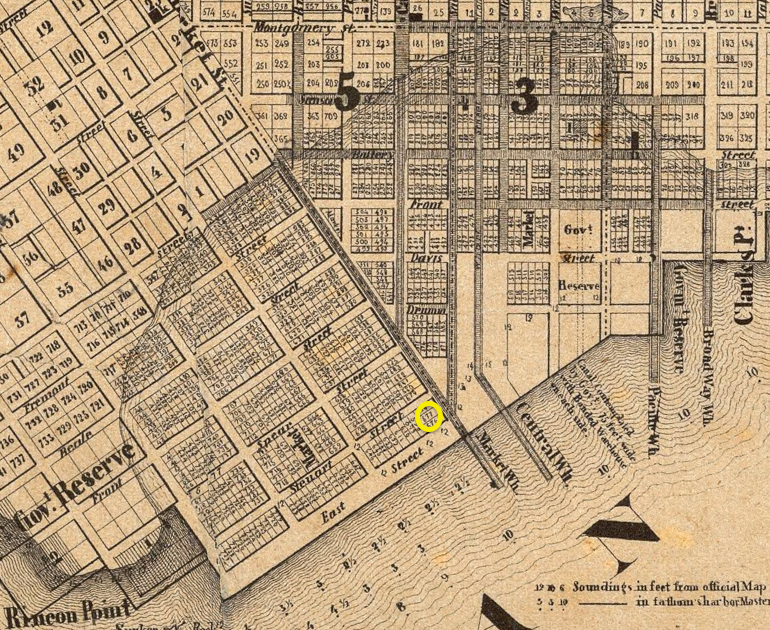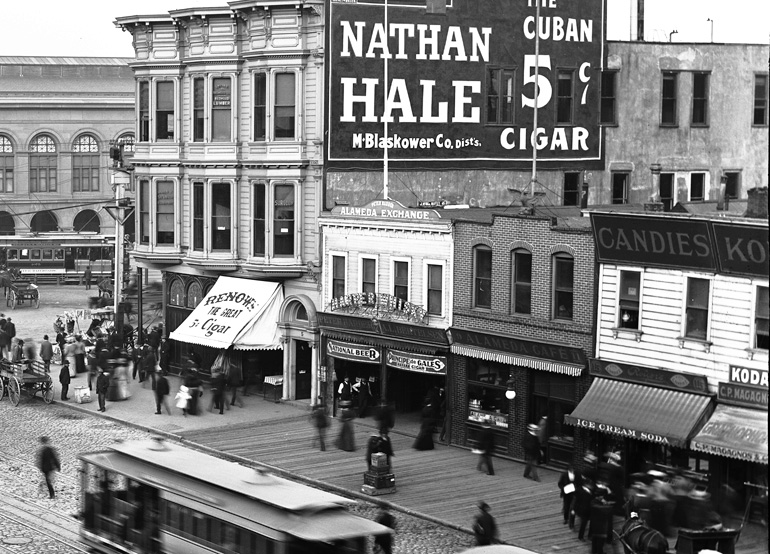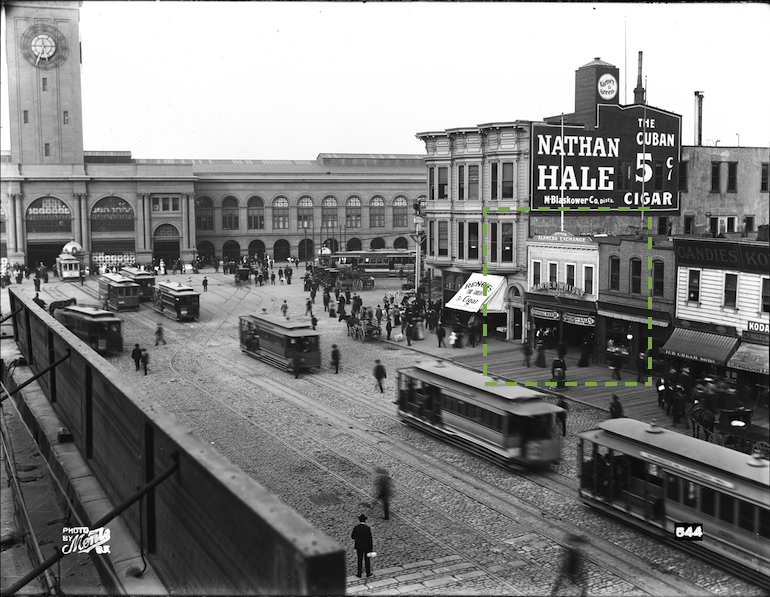If you’ve ever traveled on a Muni train from Embarcadero Station to the Embarcadero, you’ve unknowingly passed through part of a ship buried during the Gold Rush Era.
We at the SFMTA Photo Archive were surprised and delighted to learn about the ship in an article by Jessica Placzek featured in KQED’s “Bay Curious” series last week. Being close to a lot of Muni history, we decided to dig further into the story too see what we could find out.
Today, we bring you the first of a two-part blog series about the long lost vessel and how it became a part of the Muni Metro System.

A detailed view of an 1852 map of downtown San Francisco showing the shoreline of the former Yerba Buena Harbor and the land that filled it in. Market Street Wharf is diagonally across the center frame. The yellow circle indicates location of the Rome, now buried underneath Justin Herman Plaza. Map from the David Rumsey Map Collection (modified through cropping and annotation) used here under a Creative Commons license.
In 1852, the three-masted vessel known as Rome was sunk at the foot of Market Street, which at the time was a wharf sticking out into the waters of Yerba Buena Cove.
Nearly 150 years later, crews boring a tunnel to extend the Muni Metro above ground to the Embarcadero in the mid-1990s encountered the Rome. The ship was directly in the path of what would become the outbound tunnel between the Folsom Street stop and Embarcadero Station, which Muni’s N Judah and K Ingleside / T Third lines pass through every day. A team of archaeologists was called in to investigate and after proper surveying and artifact collection, it was determined that the ship was too large to fully excavate. The tunnel was built through the forward hull of the ship.
Fortunately, the archaeologists uncovered a real nugget from San Francisco's maritime past. The researchers learned that the Rome had arrived in San Francisco's bustling Gold Rush port in early 1850 with a full load of eager "49ers" headed to find gold in the hills, as well as a cargo hold laden with bottles of ale and salt pork.
After sitting abandoned for two years in what was then the harbor, the Rome was used in an underhanded land-grab scheme when she was strategically "scuttled" -- or deliberately sunk -- to claim what would later become a prime plot of real estate on Market, between Steuart and East Streets (now The Embarcadero).
Excavating our files from the early 1900s, we "dug in" found an image from 1905 that shows the area on lower Market directly over the final resting place of the Rome. By at least that year (likely much earlier), this and the other ships buried below downtown had long been covered over and were completely unknown to passers-by on the street above.
Cable Cars on lower Market Street between Steuart and East (Embarcadero) streets. A closer look at the area within the green box is below. Photo taken August 22, 1905.

In the image above, the ship Rome would have been under the Alameda Exchange, the small white building at center frame beneath the billboard. This spot is now Justin Herman Plaza, in the vicinity of the bocce ball courts.
In Part 2, which we plan to publish on August 4, we'll bring you more info about the Rome and its discovery during the construction of the Muni Metro Turnback Project in 1994.
Stay tuned to our Twitter and Instagram accounts for more awesome photos from the SFMTA Photo Archive.
Learn more in Part 2 of this series.
